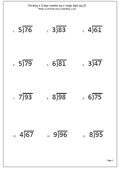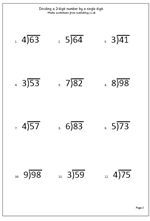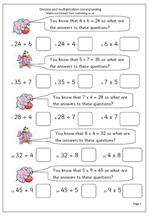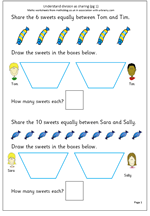 This is the second division worksheet which looks at the intermediate stage between mental methods of division and a standard method. I am not a great fan of this method but it is used in many schools.
This is the second division worksheet which looks at the intermediate stage between mental methods of division and a standard method. I am not a great fan of this method but it is used in many schools.
The first thing to do, as always is to make an estimate of the answer so that any silly slip ups in the calculation may immediately come to light. The second stage is to find a multiple of ten that can be taken away – in all these examples and questions this multiple is 10 itself. Then we move towards the more traditional method of asking ‘how many…. in….’.
If you are just moving towards doing division, perhaps in Year 3/4 it is certainly a method which can be used.


